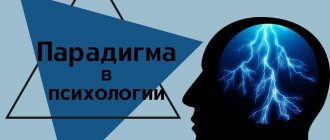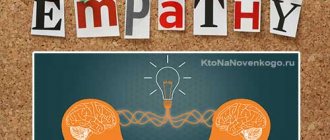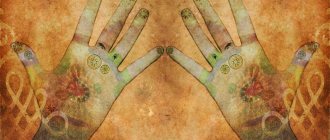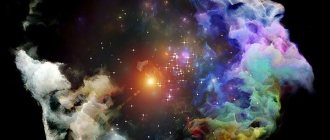06/16/20215 minutes read 885
The foundations of psychoanalysis were formed at the turn of the 19th and 20th centuries. Today, although the concept remains controversial, it has become an important and integral part of modern culture, having a significant influence on philosophy, medicine, religion and culture. Any educated and inquisitive person should have an idea of what psychoanalysis is and understand its basic terms.
The founder of psychoanalytic theory is the Austrian physician Sigmund Freud (1856 - 1939). He was educated at the University of Vienna, did an internship in France, in Berlin, and then went into private practice, working with patients of various ages, trying to find effective ways to treat neuroses, mental disorders and explain their causes.
Long-term and professional continuous practice pushed him to form his own concept, which he repeatedly outlined in his numerous works, talking about what the unconscious is, what role it plays in human life and how to use this knowledge in practical activities in various fields of knowledge.
Initially, S. Freud started from the concept of “catharsis,” which goes back to Aristotle. The essence of the term is that during the emotions that a person experiences, perceiving works of dramatic art, empathizing with the characters, the soul is “cleansed” of everything accumulated over many years.
Therapy based on this concept involved using hypnosis to force a person to remember the emotions they experienced during a traumatic event. This procedure brought relief. But one day Freud came to the conclusion that not all patients are amenable to hypnosis, and this prompted him to search for new techniques of influence. Thus, a method based on free associations soon appeared.
Patients were asked to talk about all the associations and fantasies they had in the process of discussing any issues or interpreting dreams. This made it possible to build hypotheses regarding the origins of the disease. Thus psychoanalytic theory was born.
Quote According to Freud, of all the discoveries that humanity has ever made, three can be identified that have caused significant damage to human narcissism:
1. The cosmological theory of Nicolaus Copernicus, which proved that our planet is not the center of the Universe, but is just one of the planets of a small system. 2. The biological concept of Charles Darwin, according to which man is not a higher power, but is descended from animals as a result of natural selection common to all living beings. 3. Freud's own discovery of the unconscious and its superiority over consciousness.
What is psychoanalysis: the essence of the theory
Let's define the concept. The name is derived from two Greek words: “soul” and “decomposition, dismemberment.” The concept entered the scientific community in 1896 after the publication of a German article on the origin of neuroses. It is no longer possible to say exactly who first introduced the concept of psychoanalysis, but Sigmund Freud is considered its founder. It was he who invented psychoanalysis and proposed it as a branch of psychology.
The Laplanche and Pontalis dictionary gives the following definition of psychoanalysis: “This is a research method based on identifying the unconscious meanings of words, actions, products of human imagination (dreams, fantasies, delusions); a method for treating neurotic disorders based on this research; a set of theories of psychology and psychopathology that systematizes data obtained by the psychoanalytic method of research and treatment.”
Thus, psychoanalysis in simple words is a scientific theory and method of treating mental disorders. It is currently being considered in three areas:
- as a psychological and philosophical theory of personality;
- as a set of principles and methods for studying the unconscious of the individual;
- as a direction in psychotherapy that helps get rid of intrapersonal conflicts, neuroses, complexes, psychoses, depression, phobias and other problems.
Psychoanalysis in psychology is considered both theory and practice. Let's look at the essence of S. Freud's theory of psychoanalysis.
What does psychoanalysis study? Unconscious motives and desires of the individual. If we talk about psychoanalysis as a theory, then its essence can be reflected in several theses (features):
- the conflict between the conscious and unconscious leads to the development of neuroses, fears, depression and other psychological problems;
- thoughts and behavior are determined by unconscious desires;
- awareness of true motives, needs, desires is difficult due to the inclusion of protective mechanisms of the psyche;
- psychological problems can be solved if they are brought to the level of consciousness (this can be done using psychoanalytic methods).
The basic idea of Freud's psychoanalysis is that there can be no inconsistency or interruption in human mental nature. That is, everything that a person has in the present is the result of the past. If something doesn’t suit you now, then you need to look for the reason in the past. And now we will analyze everything in more detail and in order.
Psychoanalysis in psychology
The psychoanalytic direction is still one of the leading in psychology. S. Freud's concept was supplemented by his followers, one of whom was his closest student - C. G. Jung (1875-1961). He, starting from the concept of the unconscious of S. Freud, introduced his concept of the “collective unconscious”, complementing the “individual unconscious”, and sometimes breaking into it, by which he understood the totality of problems, fears and experiences that drive people at all times and are transmitted from generation to generation. The collective unconscious consists of archetypes.
Key archetypes:
- "Anima" and "Animus"
This is a feminine and masculine principle, which is similar to the Chinese “yin” and “yang”.
- "A person"
an archetype characterized by the presence of various masks. The true motives of the actions of a person in whom he dominates are difficult to unravel; he is always different and takes on the form that is beneficial to him depending on the situation.
- "Shadow"
the dark side of personality, habits, desires, attitudes that he rejects and suppresses. The image of the “shadow” is Mephistopheles from the novel by I.V. Goethe "Faust".
- "Hero"
manifestation of strength, courage, justice.
If there is a breakdown in one or another archetype, then a person begins to go to extremes and excesses occur in one direction or another. If the “hero” archetype is torn, a person can be either recklessly brave or, conversely, cowardly.
K. Jung did not reject the basic postulates of the foundations of psychoanalysis by S. Freud, but supplemented them with his own concepts. The personality structure according to K. Jung’s theory is as follows. At the very bottom is the “self”
- the core of personality, all its deepest foundations.
A little higher is the collective unconscious (archetypes).
Next is
the individual unconscious,
at the top of which is
the “shadow”
- what we suppress in ourselves.
Then comes the “ego”
- the central part of consciousness.
And at the very top is “persona”
- what we show to society, how we position ourselves, what masks we present.
Quote Illusions attract us because they relieve pain and bring pleasure as a replacement. For this we must accept without complaint when, coming into conflict with a part of reality, illusions are shattered.
Sigmund Freud
Who is the founder of psychoanalysis
The author of the theory and founder of the method of psychoanalysis is the Austrian psychologist, psychoanalyst, psychiatrist and neurologist Sigmund Freud. He was also the founder of the school of psychoanalysis. Sometimes the theoretical basis of psychoanalysis (Freud's philosophy) is called Freudianism. Freud's theory had a significant influence on psychology, medicine, sociology, anthropology, literature and art of the 20th century.
Interesting! Freud's closest followers were K. Jung, K. Horney, A. Adler, E. Fromm and others. Some of the modern psychologists also rely on Freud's teachings.
Preface
The truth will set you free.
Z. Freud
Sigmund Freud's psychoanalysis became the historical event that radically changed people's ideas about themselves. The emergence of depth psychology, which openly declared the dominance of drives and the existence of infantile sexuality, was met with violent indignation from the conservative-minded public at the beginning of the 20th century. The period of active resistance to psychoanalytic knowledge, fortunately, did not last long and quite soon gave way to a stage of growing interest in it. To date, psychoanalytic ideas have become an integral part of human culture and have found application in almost all spheres of social life. At the same time, due to a number of historical and psychological reasons, the name of Freud remains shrouded in a trail of uncertainty. Common ideas about psychoanalysis are for the most part reduced to simplified and very far from the truth cliches, causing contradictory, and in some cases, unreasonably negative attitudes from people.
Defining what psychoanalysis is,
Z. Freud pointed out that it simultaneously hides: 1) a method of studying mental processes that are inaccessible to ordinary understanding;
2) method of treating neuroses; 3) a number of psychological theories that arose as a result. The idea of creating a general psychological concept (metapsychology),
revealing the basic patterns of human mental life in normal and pathological conditions, never left Freud. As a result of the implementation of this plan, the basic principles of classical psychoanalysis were developed, constituting the theoretical and methodological basis for all subsequent psychoanalytic schools.
In more than a hundred years of its existence, psychoanalysis has undergone dramatic changes. In the field of Sigmund Freud's monotheistic concept, a complex scientific system has grown, including a variety of theoretical views and practical approaches. Modern psychoanalysis is a set of approaches united by a common subject of research, which is the partially or completely unconscious aspects of people’s mental life.
The general goal of psychoanalytic work is defined as the liberation of individuals from various unconscious restrictions that cause suffering and block the process of progressive development.
A distinctive feature of psychoanalysis has always been the close connection between theory and practice.
Psychoanalysis originated as a method of treating neuroses and developed as a doctrine of unconscious processes, on the foundation of which a scientific and practical system gradually formed, aimed at solving a variety of social problems.
In modern psychoanalysis, three interrelated areas are clearly distinguished: psychoanalytic theory
, which forms the basis for various practical approaches,
clinical psychoanalysis
, focused on providing psychological and psychotherapeutic assistance in case of personal difficulties or neuropsychic disorders, and
applied psychoanalysis
, aimed at analyzing cultural phenomena and solving social tasks.
At this stage of development, psychoanalysis is no longer a monolithic entity, uniting many subsystems within the framework of a general methodology. In this regard, two main paradigms are distinguished: classical (orthodox) psychoanalysis
, consistently developing the ideas proposed by Freud, and
modern (heterodox) psychoanalysis
, complementing the classical approach with new original concepts and methods. It is not possible to list all modern psychoanalytic theories. Within the framework of the general outline, psychoanalytic schools are distinguished that place emphasis on certain theoretical positions or technical aspects, for example, the Kleinian tradition, the school of Anna Freud, the theory of object relations, ego psychology, Lacanian structural psychoanalysis and others.
As an alternative, but close to psychoanalysis, a psychodynamic approach
, used by numerous consolidated groups, including: Jungians, Adlerians, representatives of transactional analysis and many other researchers, whose original approaches to theory and practice, although they deviate from the main psychoanalytic framework, have undoubted scientific and practical value.
In relation to psychotherapeutic practice, there are three relatively independent directions: 1) the classical technique of psychoanalysis (psychoanalysis)
;
2) psychoanalytic therapy
;
3) psychodynamic approaches.
In the first case, the treatment of individuals is built in maximum accordance with the methodology proposed by Freud; in the second case, some deviations from the classical canons are allowed, for example, by reducing the number of meetings with the patient from five to twice a week; in the third version there are fundamental deviations from the original psychoanalytic technique.
Modern psychoanalysis is a continuously developing system within which the classical heritage is naturally transformed into current knowledge.
Any historical era focuses its attention on concepts that reflect the urgent needs of society.
If during the period of Freud's work the theory of drives
and
the concept of infantile sexuality
, then at present
the theory of object relations and ego psychology are the undoubted leaders in the field of psychoanalytic ideas.
At the same time, the technique of psychoanalysis is constantly changing.
The listed features of the subject being studied are most fully covered in the specialized literature, among which a special place is occupied by the two-volume work by H. Thome and H. Kächele “Modern Psychoanalysis”
(literal translation from German is “Textbook of Psychoanalytic Therapy”). This work is a systematic guide to the use of the theory and methodology of psychoanalysis by practicing psychotherapists. For all its depth and content, the book by Thome and Kaechele, like many other psychoanalytic publications, is aimed at specialists with thorough professional training, but for an untrained reader it is quite difficult, and in some cases simply impossible, to benefit from such literature due to the expressed specificity of the latter.
This work has the same title, but is aimed at a more accessible to a wide audience and at the same time scientifically based description of modern psychoanalysis as a dynamically developing system that integrates psychoanalytic theories and their practical application.
The book consists of three parts. The first chapter introduces the basic concepts of psychoanalysis. Here are the basic concepts of Sigmund Freud, creating a unified context for the entire psychoanalytic system. The second chapter of the first part contains an analysis of the views of Freud and his followers on social processes that form the basis of modern applied psychoanalysis.
The second part of the book is devoted to a discussion of modern schools of psychoanalysis, most of which are focused on solving clinical problems. The term clinical psychoanalysis
, although not fully reflecting the reality it denotes, is sufficiently ingrained in people’s minds to designate the “therapeutic” goals of psychoanalysis. The modern practice of psychoanalysis has gone far beyond the boundaries of the treatment of neuroses. Despite the fact that neurotic symptoms are still considered as an indication for the use of classical techniques, modern psychoanalysis finds adequate methods of helping people with a wide variety of problems - from ordinary psychological difficulties to severe mental disorders.
The second chapter of the second part reveals the principles and features of the organization of certain forms of clinical psychoanalysis using the example of two main options: classical technique and modern psychoanalytic therapy. Practice shows that psychoanalysts, initially focused on individual work with the patient, are beginning to increasingly recognize the importance of couples counseling and family psychotherapy. This relatively new application of psychoanalysis became relevant in the 1960s and 1970s due to the emerging trend of a crisis in the traditional patriarchal family model. Currently, relationship therapy is in demand by society and can be considered as expanding the analyst’s capabilities in solving therapeutic problems.
The third section of the book provides the definition and main provisions of applied psychoanalysis
. Based on this, the deep aspects of current social phenomena are revealed: group interaction, mass culture, charismatic leadership, as well as the psychological effects of advertising and the media. To increase the effectiveness of readers' perception, the listed social phenomena are considered primarily from the perspective of classical psychoanalysis. The main attention is paid to the unconscious fantasies and motives of people's behavior in society. Using the example of modern advertising, the possibilities of applying psychoanalytic ideas to solving various social problems are demonstrated.
Unfortunately, due to the limited volume of the book, it was not possible to cover all modern psychoanalytic schools, including the Jungian movement, structural psychoanalysis of J. Lacan, group analysis and others. These approaches are widely represented in the literature and deserve separate study. This manual solved the specific problem of describing the current state of the classical tradition of psychoanalysis. I would like to hope that the psychoanalytic ideas discussed will be useful both for understanding the readers’ own life experience and for increasing the level of their professional competence.
E. V. Zmanovskaya
Basics of psychoanalysis
The unconscious, sexual instinct, sublimation, Freudian slip - you may have heard these concepts. All of them relate to psychoanalysis. Do you know their definitions and essence? Now let’s figure it all out, consider the basics of personality psychoanalysis, and analyze the key concepts.
Consciousness and unconsciousness
In the theory of psychoanalysis, Freud identified 2 structures of the psyche. Each of them has three layers, but these structures are somewhat different from each other. First, let's look at the layers of the first structure:
- Unconscious. All secret desires, repressed memories, animal instincts, immoral desires are stored here.
- Preconscious, or subconscious. At this level is located what a person knows and remembers at the present time or, if desired, can remember.
- Consciousness. These are thoughts, feelings, emotions, plans of a person in the present.
This is the primary structure of the psyche according to Freud. Later, the psychoanalyst discovered the method of free associations and developed a new structure (concept) of the structure of the psyche. In it he identified three elements: It, I and Super-ego.
"It", "I" and "Super-ego"
According to the theory of psychoanalysis, our psyche has three levels:
- Id (It), or lower level. This is the level of instincts, drives - everything that remains in us from animals. This is also the level at which all repressed desires, memories, and needs are stored. Simply put, this is the level of the unconscious (popularly it is often called the subconscious, but now you know the difference). What happens at this level is beyond our control. It reminds itself of itself through emotions and feelings, mental states, dreams, slips of the tongue and typos, bodily symptoms, etc.
- Ego (I), or middle level. This is the field of our awareness. Experience, knowledge, skills, beliefs and everything that we have accumulated in the process of socialization have gathered here. We control and understand everything that is here, we can control our thoughts and behavior.
- Super-Ego (Super-I), or highest level. This is our inner moralist, critic and censor - conscience, if you like. At this level all our ideas about “what is good and what is bad” and how we should behave in society are located.
Often the id and the superego come into conflict, and the ego tries to reconcile them. In fact, every person spends most of his life in such a search for a balance between animal instincts and the highest moral values, prohibitions, and norms. Not everyone manages to maintain balance; sometimes we are tossed in one direction (we give in to desires, emotions), then in the other (we rationalize life too much, block our feelings and suppress desires). Both are dangerous. If falling to one side occurs too often, a person develops complexes, neuroses and other psychological problems.
Important! Suppressed desires lead to the development of complexes. Sublimation helps get rid of frustration (experience due to the inability to satisfy a need).
Defense Mechanisms
According to Freud, any psychological problems are associated with the conflict between the animal and the social in man. That is, when a person suppresses desires that are shameful by social standards, he gets sick, becomes aggressive, apathetic, and irritable. This can be avoided if you redirect the animal impulse into a productive direction: creativity, sports, career building, social activity. This is called sublimation - the transfer of sexual energy to another activity. Sublimation is one of the protective mechanisms of the psyche named by Freud.
In addition to sublimation, the psychoanalyst identified 7 more defense mechanisms (later other psychologists expanded this classification):
- Crowding out. If a person does not understand how to satisfy his desires in a socially acceptable way, but cannot forget about it, then he represses them to the level of the unconscious. And he seems to forget (he really doesn’t remember). However, this does not mean that the impulses have disappeared. They continue to influence a person's thoughts and behavior. A lot of energy is spent on restraining desires, which is why a person soon falls ill.
- Negation. The person convinces himself that it seemed to him that it happened by accident, that he misheard, etc. In general, he tries his best to convince himself that something unpleasant did not happen or that it did not happen to him.
- Rationalization. A person convinces himself that he could not have acted differently. Yes, he committed a shameful act, but it was necessary. In most cases, the explanation actually looks logical, but it has nothing to do with the true motives.
- Projection. A person blames others for what he does not accept in himself. For example, a cheater accuses his partner of cheating, a traitor suspects his friend, etc.
- Substitution. When a person cannot take out his anger on one object, he takes out his aggression on another. For example, a child who is beaten by his parents beats younger children and abuses animals. A man who cannot hit his boss takes it out on his children and wife at home. By the way, replacement concerns not only aggression. Any emotion and feeling can take part in this. For example, a young man likes one girl, but he cannot be with her, so he meets with a more accessible one, imagining that passion (and sometimes trying to make the second girl the first).
- Inversion. This is an attempt to evoke exactly the opposite feelings towards an object. For example, in order to survive a painful breakup, a girl begins to concentrate on the man’s real and imagined shortcomings. The goal is to make the object disgusting, not so attractive. Then the desire and attraction to him will disappear.
- Regression. This is a return to the previous stage of development, that is, the inclusion of children's behavior patterns. You may have thought that we are talking about hysterics, screaming, crying, insults, demonstrative care, etc. Yes, but not only. Alcoholism, gambling, drug addiction, eating problems, smoking - this is also a form of regression. Adults do not escape reality - they solve problems.
The protective mechanism of the psyche is a set of unconscious reactions that protect a person from negative emotions and experiences. Defense mechanisms help maintain mental balance. However, you cannot rely only on these forces all the time. Frequent use of defense mechanisms leads to personality deformation and hinders socialization. And also, defense mechanisms sometimes fail, which also does not benefit the individual.
Psychosexual development
According to Freud, every person goes through 5 stages of psychosexual development, each of which has its own leading need:
- Oral (0 – 1.5 years). At this stage, the baby needs close communication with the mother through breastfeeding. The mouth area is associated for a child with safety, care, and tenderness.
- Anal (1.5 – 3 years). The need for independence prevails. This is potty training period. Going to the toilet independently is a child’s first conscious and serious action. He likes to feel that he is in control of himself and the situation. At the anal stage, the rudiments of self-control and self-regulation are formed.
- Phallic (3 – 6 years). This is the stage of passing through the Oedipus complex (for girls - the Electra complex). According to Freud's theory, sexual energy is inherent in a person from birth. At the age of 3-6, children develop an interest in the parent of the opposite sex. The child tries with all his might to get his attention, love, care. Aggression and jealousy awaken towards a parent of the same sex as the child. Gradually, the offspring realizes that he is losing the “war”; the attraction goes to the subconscious level. In the future, it will transform into a search for a partner who is similar to a parent.
- Latent (6 – 12 years). At this stage, the libido is dormant. The child needs social activity. It is important to encourage meeting with friends, participating in hobby groups, etc. Freud called reorientation toward social activity sublimation. And it is at this stage, as Freud believed, that the Ego and Superego appear.
- Genital (puberty and up to 22 years). Sexual energy awakens, now it is directed towards the teenager’s peers. At first, interest in people of the same sex arises (this takes the form of friendship), and later the young man’s attention switches to people of the opposite sex. In adulthood, this results in the building of love relationships and family.
For example, getting stuck at the anal stage of development leads to the formation of an anal character. Such a person is characterized by stinginess, greed, stubbornness, pedantry, a tendency to aggression and self-destruction, impulsiveness, and conflict.
Note! Getting stuck at stages of development occurs due to insufficient or excessive satisfaction of the leading needs of this period. That is, the child was either not given something and for the rest of his life he tries to get what he wants, to compensate for the previous deficit, or he was “strangled” with something and in adult life he defends himself with all his might, defends personal boundaries, avoids what reminds him of the problem period from childhood.
Complexes
The concept of “complex” appeared in later versions of the theory of psychoanalysis and is associated with the name of Freud’s follower – A. Adler. A complex is a set of experiences that arise against the background of a contradiction between personal and social, “I want” and “should.”
They often talk about an inferiority complex - this is a combination of a person’s experiences due to the subjective perception of his own failure. Simply put, a person considers himself worse than others, less worthy. He sees the happiness and success of those around him, wants to feel the same, but cannot and does not know how to achieve this.
In fact, human psychoanalysis examines much more complexes. Here are just a few of the popular ones:
- overcompensation complex - attempts to hide an inferiority complex through a demonstration of strength and aggression;
- Phaedra complex - painful overprotection of a mother in relation to her son;
- Polycrates complex – fear due to rapid development in life, anxiety against the backdrop of success;
- Jonah complex – self-doubt and a feeling of unworthiness, denial of personal achievements and victories;
- excellent student complex - a craving for perfectionism, the desire to be a “good girl” or “good boy” in everything;
- impostor complex - a person thinks that he is taking someone else’s place, that he accidentally received all the benefits that he has.
The idea, goals and objectives of the psychoanalytic direction
Psychoanalysis in psychotherapy is a means of obtaining complete information about the client. The main tasks of psychoanalysis:
- Collection of necessary information about the client. Psychoanalysis allows you to collect raw data. Unlike questionnaires and other methods that involve choosing from several answer options, psychoanalytic methods do not limit the client.
- Establishing the true cause of psychopathology. The deeper the roots of the problem, the more difficult it is to determine the root cause. Psychoanalysis allows you to view all the data inherent in a person, even those determined genetically.
- Elimination of internal conflict of contradictions. Psychoanalysis, releasing repressed desires, simultaneously relieves the client of accumulated tension caused by the constant need to fight them.
The idea of psychoanalysis, as a separate direction, is subject to the general concept of motivation for human behavior. According to psychologists, the true motives of behavior are hidden and often incomprehensible to the person himself.
Methods of psychoanalysis
As we have already found out, psychoanalysis is not only a theory, but also a practice. With its help, you can diagnose and correct your mental state. Psychoanalysis includes many techniques for working with the unconscious, but all of them can be divided into three groups.
Methods of psychoanalysis:
- Interpretation. The point is to analyze and comprehend minor elements: slips of the tongue, random phrases, errors in speech, etc. The psychoanalyst and the client talk about the person’s past, present and visible future, and during this the specialist identifies hidden problems and fears. That is, he interprets the client’s words and helps to “translate” them. Interpretation does not act as an independent method, but as an auxiliary one. For example, it is used in combination with two other popular methods of psychoanalysis: the method of free association and the method of dream interpretation.
- Free associations. The psychoanalyst calls the client words, phrases or shows pictures and invites him to respond with the first thing that comes to mind. Auxiliary materials are prepared in advance. They can be developed by the psychologist himself for a specific case. Or the specialist uses well-known techniques, for example, the Rorschach drawing test (ink spots on paper). It was Freud, with his psychoanalysis and the method of free association, who created the image of a patient lying on a couch and a psychologist listening to the client. In life, such communication is rare, but then Freud interacted with clients this way. He invited the person to lie down on the couch, relax and start saying whatever came to mind. Strange, obscene, fantastic, shameful - it doesn’t matter. There are no taboos in the psychoanalyst’s office, and the specialist adheres to the principle of a non-judgmental attitude. Sooner or later, in the process of such a free flight of associations, a person independently came to the main conflict.
- Analysis of dreams. Nowhere does the unconscious manifest itself more actively than in dreams. Particular attention should be paid to recurring dreams or dreams after which a person wakes up “broken.” According to Freud, the stranger the dream, the more meaning it makes. The fact is that in dreams any prohibitions and censorship disappear, defense mechanisms are turned off, everything that has accumulated there comes out of the unconscious. However, not all so simple. True experiences, desires, needs in dreams are shown by symbols. And these are the symbols that the consciousness of a particular person will accept. That is, a certain “filter” is preserved even in the realm of the unconscious – sleep. To immerse yourself in the art of reading dreams, study S. Freud's book “The Interpretation of Dreams.”
Using these methods, you can look into a person’s unconscious, identify repressed desires, emotions and memories, understand the motives of actions and correct behavior.
Important! Do not confuse psychoanalysis with psychotherapy. The psychoanalyst is largely responsible for ensuring that the person speaks freely and finds the origins of the problems themselves, as well as their solution. The psychoanalyst guides, but does not give direct instructions and advice.
Jung's theory of the collective unconscious
The subject of Jung's research was the structure of the unconscious psyche. He believed that the individual does not fill the psyche with repressed desires, but receives images accumulated by his distant ancestors. Thus, his unconscious is a storehouse in which not only individual, but also collective information is stored, and the personality cannot be considered in isolation from them.
Jung separated the personal and the collective, highlighting the first in the upper, more conscious layer of the psyche. It includes personal memories, forgotten desires, experiences associated with individual experience. The filling of the personal unconscious depends on the social conditions of a person, his personal history.
The collective goes deep into the unconscious layer of the psyche. It includes instincts, natural knowledge, drives and archetypes. All knowledge received by people from animals, racial and religious prejudices become an inheritance and pass into the unconscious of every person, regardless of his local culture.
Accumulated archetypes and instincts determine human behavior and its internal content. Jung believed that there are only two human types: extroverted and introverted. The first is directed to the external environment. Such a person needs regular contact with other people; he can receive an energy charge only during communication. The second is directed inward. Introverted people need frequent solitude; they are absorbed in their own experiences and thoughts. Pure types are rare; most people are a mixture of the two types, leaning only slightly towards one of the polarities.
Jung also revised Freud's understanding of the term “libido.” He defined it as attraction, but did not identify it only with the sexual instinct.
Concept
We have already said a lot about Freud’s theory, but all of this is somehow generalized, mixed up (new and old). What is the concept of Freud's original theory of psychoanalysis? Let us outline the main provisions (features) of psychoanalysis:
- All psychological problems of the individual are caused by the conflict between the conscious and unconscious.
- Physiological needs suppress the needs of higher levels. As Freud said, “at the basis of all our actions are the desire to become great and the sexual desire.”
- Every incident in a person's life has its consequences.
- Every action has an obvious or hidden motive, which is associated with a person’s previous experience.
- The individual development of a subject is determined by the structure of the personality, childhood and youth experience.
- The psyche is a complex mechanism consisting of three levels: It, I, Super-ego. It is important to study all this in a comprehensive manner and look for the causes of psychological problems in the present at the level of the It (unconscious).
In the theory of psychoanalysis, the subject of study is unconscious motives leading to mental disorders.
Now let's move on to an analysis of the types of psychoanalysis.
Adler's theory of the need for compensation
Considering the process of personality formation, Adler named a feeling of inferiority as a driving motive. The most common cause of disability is physical disabilities. An individual, realizing his difference from other people, strives to regain a sense of fullness and take a more advantageous position in society.
To do this, he uses compensation, realizing himself in other areas not related to the defective one. The inability to receive compensation causes neurosis.
Adler denied Freud's assertions about the susceptibility of human behavior to instincts and drives. In his opinion, the main incentive of an individual is the desire to communicate, to realize oneself as a member of society. The life of an individual is determined by his orientation towards other subjects, and not by his innate qualities.
What directions (types) of psychoanalysis exist today?
In modern theories of psychoanalysis, the emphasis has shifted from sexuality. Psychologists consider not only this need as the cause of all troubles, but also other unmet needs.
For example, people with a heightened and unsatisfied need for power often become tyrants at home or at work. People who lack warm social contact surround themselves with animals. People who cannot or are afraid to have children, but want it, also direct their energy towards animals, for example, cats. Women who cannot succeed as professionals find themselves in raising children.
Classical Freudian psychoanalysis is one of the types of this teaching known to psychology. There are other schools (directions) of psychoanalysis. Let's briefly highlight them:
- Ego psychology. If Freud paid more attention to the Id, then here all attention is focused on the Ego (I), that is, the conscious part of the personality.
- Object Relations Theory. This theory is based on the proposition that the psyche is a system of internal objects that are a reflection of people and situations from the outside world. The specifics of relationships with people in the present and the life scenario are determined by the childhood experience of the subject. That is, in adulthood a person reproduces what he was used to in childhood.
- M. Klein School. The psychoanalyst paid more attention to child psychoanalysis, in particular to the analysis of the Oedipus complex. She considered love and aggression as the main driving forces of the psyche. The first one heals, the second one splits the psyche.
- Structural psychoanalysis by J. Lacan. The psychoanalyst viewed a person strictly as a subject and proposed solving psychological problems through speech. He considered the basis of personality to be a tandem of three elements: imaginary (a person’s idea of himself based on knowledge of other people), symbolic (search for differences in himself and others), real (situation, place where the individual first met another). The psychoanalyst depicted this as a symbol of three connected rings. If even one ring is opened, the mental balance of the individual will be disrupted.
- Interpersonal psychoanalysis (G.S. Sullivan, Clara Thompson). Attention is focused not on the analysis of personality, but on the analysis of interpersonal relationships. It was this element that psychoanalysts considered the most important and significant in the mental development of the subject.
There are other modern areas of psychoanalysis, but these are the most in demand.
Stages of mental analysis, psychoanalyst tools
In psychoanalysis, they use step-by-step work with a person, consisting of 3 steps:
- Production of material. At this stage, the psychoanalyst collects information without attempting to evaluate or filter. It is important to obtain full disclosure from the client in order to collect truthful data.
- Information analysis. The collected material is considered from the point of view of professional knowledge, and a model of working with the client is selected.
- Working alliance with the client. A working relationship is established with the client, in which the psychologist plays a guiding role.
To collect information in psychotherapy, methods are used to obtain true data. These methods include:
- Interpretation of dreams. The client keeps a dream diary, where he writes down every day all the dreams that he can remember. The psychologist uses the recordings for further interpretation.
- Speaking out thoughts. The client speaks out all his thoughts for a given time, without trying to think about his speech. The psychotherapist records information on a voice recorder without commenting on what he heard in front of the client.
- Free associations. A classic method developed by Freud and used by him to characterize a client's internal states. It involves the use of associative thinking. The client hears a series of unrelated words, naming the first association for each one. Based on the data obtained, assumptions are made about a person’s real motives. It is important that the associations come first; the client should not think and try to guess which association will be preferable.
The reliability of the information received depends on the degree of trust between the psychotherapist and the client. The correct type of relationship is established if the phenomenon of transference occurs: the client sees the therapist as a parental figure and transfers onto him the feelings and desires experienced in early childhood.
How psychoanalysis influenced the development of psychology
Freud's theory of psychoanalysis contributed to the development of psychology. Psychoanalysis made a real revolution in the world of psychotherapy and psychiatry. This theory was reflected in the works of other psychologists (representatives of psychoanalysis): A. Freud, D. Winnicott, H. Hartmann, M. Mahler, E. Glover, E. Erikson, M. Klein and others. Direct followers of Freud are Carl Jung, Alfred Adler, Otto Rank, H. Hartman, E. Chris, Anna Freud (daughter of the famous psychoanalyst).
What is the significance of psychoanalysis for fundamental and practical psychology? After Freud's discoveries, researchers began to pay more attention to the topic of defense mechanisms of the psyche, stages of mental development of the individual, levels of consciousness, and psychosomatic disorders. Dreams received special attention. Before the publication of the book “The Interpretation of Dreams” by S. Freud, they were not given such importance.
Interesting! Freud's teachings even influenced cinema. Alfred Hitchcock, Federico Fellini, Michelangelo Antonioni, Paolo Pasolini were inspired by his works.
Sigmund Freud psychoanalysis
The main regulatory mechanism of human behavior is consciousness. S. Freud discovered that behind the veil of consciousness there is hidden a deep, “raging” layer of powerful aspirations, aspirations, and desires that are not realized by the individual. As a practicing physician, Freud was faced with the serious problem of complications of existence due to the presence of unconscious worries and motives. Often this “unconscious” becomes the cause of neuropsychiatric disorders. This discovery prompted him to search for tools that would help relieve patients from the confrontation between the “pronounced” consciousness and hidden, unconscious motives. Thus, Sigmund Freud’s theory of psychoanalysis was born - a method of healing the soul.
Not limiting himself to the study and treatment of neuropaths, as a result of hard work to recreate their mental health, S. Freud formed a theory that interpreted the experiences and behavioral reactions of sick individuals and healthy individuals.
Sigmund Freud's theory of psychoanalysis is known as classical psychoanalysis. It has gained enormous popularity in the West.
The concept of “psychoanalysis” can be represented in three meanings: psychopathology and personality theory, a method for studying an individual’s unconscious thoughts and feelings, a method of treating personality disorders.
Freud's classic psychoanalysis demonstrated a completely new system in psychology, which is often called the psychoanalytic revolution.
Sigmund Freud's philosophy of psychoanalysis: he argued that the hypothesis of unconscious processes of the psyche, the recognition of the doctrine of resistance and repression, the Oedipus complex and sexual development form the fundamental elements of psychoanalytic theory. In other words, no doctor can be considered a psychoanalyst without agreeing with the listed basic premises of psychoanalysis.
Freud's psychoanalysis is the basis for understanding many processes in the social mind, mass behavior, individual preferences in the field of politics, culture, etc. From the position of psychoanalytic teaching, the modern subject lives in a world of intense mental motives, is overwhelmed by suppressed aspirations and inclinations, which leads him to television screens, serial films and other forms of culture that give a sublimation effect.
Freud identified two fundamental antagonistic driving forces, namely "thanatos" and "eros" (for example, life and death). All processes of a destructive nature in the subject and society are based on similar oppositely directed motives - “striving for life” and “craving for death”. Freud viewed Eros in a broad sense as an aspiration towards life and gave this concept a central place.
Freud's theory of psychoanalysis gave science an understanding of such an important phenomenon of the individual psyche as “libido” or, in other words, sexual desire. Freud's central idea was the idea of unconscious sexual behavior, which is the basis of the subject's behavior. Behind most manifestations of fantasies and creative potential, sexual issues are predominantly hidden. Any creativity was considered by Freud to be a symbolic fulfillment of unfulfilled desires. However, there is no need to exaggerate this concept of Freud. He suggested that behind every image there must be an intimate hidden meaning, but in principle it is undeniable.
Introduction to Psychoanalysis Sigmund Freud is often referred to as the concept of the unconscious psyche. The core of psychoanalytic teaching is the study of the active affective complex, which is formed as a result of repressed traumatic experiences from consciousness. The strength of this theory has always been considered that it managed to focus attention on the unimaginable complexity of the affective side of the individual, on the problem of clearly experienced and hidden drives, on the conflicts that arise between various motives, on the tragic confrontation between the spheres of “desired” and “ought”. Neglect of unconscious but real mental processes, as a determinant of behavior, in the field of education inevitably leads to a deep distortion of the entire image of the subject’s inner life, which in turn creates an obstacle to the formation of deeper knowledge about the nature and tools of spiritual creativity, norms of behavior, personal structure and activity.
Psychoanalytic teaching focuses on the motives and processes of the unconscious and is a technique that forces the unconscious to be explained in the language of consciousness, brings it to the surface in order to find the cause of the individual’s suffering and internal confrontation to cope with it.
Freud discovered the so-called “mental underground,” when an individual notices the best, praises it, but strives for the bad. The problem of the unconscious is acute in individual psychology, social life and social relationships. As a result of the influence of certain factors, a misunderstanding of the surrounding conditions and one’s own “I” appears, which contributes to a sharp pathologization of social behavior.
In a general sense, psychoanalytic theory is considered not only a scientific concept, but a philosophy, a therapeutic practice related to the healing of the psyche of individuals. It is not limited only to experimental scientific knowledge and consistently moves closer to humanistically oriented theories. However, many scientists considered psychoanalytic theory a myth.
For example, Erich Fromm considered psychoanalysis limited due to its biological determination of personal development and considered the role of sociological factors, political, economic, religious and cultural reasons in personal formation.
Freud developed a radical theory in which he argued for the predominant role of repression and the fundamental importance of the unconscious. Human nature has always believed in reason as the apogee of human experience. Z. Freud saved humanity from this misconception. He forced the scientific community to doubt the inviolability of the rational. Why you can completely rely on reason. Does he always bring comfort with him and free him from torment? And is torment less grandiose in terms of its impact on the individual than the ability of reason?
S. Freud substantiated that a significant portion of rational thinking only masks real judgments and feelings, in other words, serves to hide the truth. Therefore, to treat neurotic conditions, Freud began to use the method of free association, which consisted of patients in a supine, relaxed state saying whatever comes to their mind, and it does not matter whether such thoughts are absurd or unpleasant, obscene in nature. Powerful impulses of an emotional nature carry away uncontrolled thinking in the direction of mental conflict. Freud argued that a random first thought represents a forgotten continuation of a memory. However, later, he made a reservation that this is not always the case. Sometimes the thought that arises in the patient is not identical to the forgotten ideas, due to the patient’s state of mind.
Also, Freud argued that dreams reveal the presence of intense mental life in the depths of the brain. And directly analyzing a dream involves searching for hidden content in it, a deformed unconscious truth that hides in every dream. And the more intricate the dream, the greater the significance of the hidden content for the subject. Such a phenomenon is called resistance in the language of psychoanalysis, and they are expressed even when the individual who has seen the dream does not want to interpret the night images that inhabit his mind. With the help of resistances, the unconscious defines barriers to protecting itself. Dreams express hidden desires through symbols. Hidden thoughts, transforming into symbols, become acceptable to consciousness, as a result of which it becomes possible for them to overcome censorship.
Freud considered anxiety as a synonym for the affective state of the psyche - fear, which was given a special section in the work introduction to psychoanalysis by Sigmund Freud. In general, the psychoanalytic concept distinguishes three forms of anxiety, namely realistic, neurotic and moral. All three forms aim to warn about a threat or danger, develop a behavioral strategy, or adapt to threatening circumstances. In situations of internal confrontation, the “I” forms psychological defenses, which are special types of unconscious mental activity that allow, at least temporarily, to alleviate confrontation, relieve tension, and get rid of anxiety by distorting the actual situation, modifying the attitude towards threatening circumstances, and substituting the perception of reality. in certain living conditions.
Criticism
Freud's theory immediately attracted public attention. But it cannot be said that it was exclusively positive - there were many critics. And until now, Freud's teachings are subject to critical analysis. Here's what he's criticized for:
- too much emphasis on human sexuality;
- a strange attitude towards childhood sexuality (some researchers find the idea of the Oedipus complex wild);
- there is a possibility that the client’s condition will worsen during psychoanalysis (based on a 1994 study that proved that behavioral therapy is more effective than psychoanalysis);
- it is difficult to test the theory experimentally, since too much attention is paid to the human unconscious;
- there is too much subjectiveness in theory and psychoanalysis as an applied method of psychotherapy;
- Freud’s painful desire to look for mental pathology in everything (there are cases when Freud mistook the somatic problems of patients for mental disorders, for example, he diagnosed a patient with toothache as “Hysterical neurosis”).
Some psychologists still consider Sigmund Freud's psychoanalysis a pseudoscience. They doubt its validity, reliability and effectiveness.
Interesting! Freud's theory causes admiration or indignation, but it does not leave anyone indifferent.
Modern psychoanalysis
Despite the fact that many years have passed since the time of S. Freud, and psychology and psychiatry do not stand still, the basic terms of psychoanalysis, such as the unconscious, ego, sublimation, have grown into our lives and are even often used in everyday life. This is a rather complex theory that is applied strictly individually and cannot give a predictable result. According to the philosopher K. Popper, psychoanalysis cannot be considered a strictly scientific concept, since it cannot be refuted, but at the same time, it can be used to explain absolutely all current events and people’s actions.
Despite the fact that Freud's theory has often served as an object for jokes and anecdotes due to the overly dominant concept of sexuality in it, many psychotherapists still use it to this day, believing that there is a lot of rationality in it. “I wanted to say one thing, but said another – and this is no coincidence.”
Many psychologists still use psychoanalytic theory to explain adultery. When one of the spouses says that he loves the other, but at the same time cheats. Z. Freud would say that this may well be the case, since, in his opinion, such concepts as love and desire are different and it happens that they do not coincide. You can love one person and desire another and vice versa.
Modern psychoanalysis poses questions where they have not arisen before and obtains answers that previously could not have occurred to the patient, much less his analyst. The psychoanalytic direction indicates that current society is too fixated on the concept of “norm”. A person is afraid to go beyond the boundaries set by society and appear abnormal to others. We have all been told since childhood that mistakes need to be corrected. And psychoanalysts say that a mistake can sometimes bring good luck and happiness in the future.
Quote Recognizing a problem is half the success in solving it.
Sigmund Freud
The information presented in this material is for informational purposes only and does not replace professional advice from a physician. If you need help overcoming psychological problems, consult a specialist!
Author: Lepinskaya Violetta Olegovna
Start working with a psychologist right now
Start a consultation
Tags: psychotherapy psychologist online advice from a psychotherapist psychoanalyst online effective methods of psychotherapy art therapy how to choose a psychologist
Share
Comments
- Comments
Loading comments...
Previous article
Types of psychological counseling
Next article
Alternatives
Alternatives to psychoanalysis include cognitive behavioral psychotherapy, art therapy, Jungian analytical psychotherapy, behaviorism, Gestalt therapy, logotherapy, positive psychotherapy, psychodrama, body-oriented psychotherapy, Ericksonian hypnosis. All this, like psychoanalysis, methods of psychotherapy. They cannot fully replace each other, because these are completely different directions, but they have the same goal - to help a person realize the internal problem and get rid of it.
From the history
Freud
The founder of psychoanalysis is Sigmund Freud (1856-1939), a famous Austrian psychologist, psychiatrist and neurologist. Practicing in different hospitals, he gradually accumulated experience in order to later formalize it into one clear and well-founded theory.
- For a long time he worked with patients suffering from neurotic and hysterical character traits.
- Then he consulted aphasic children (with speech impairments). He revealed that their problems are not caused by physiology, but by mental reactions.
- He completed an internship with the famous neurologist J.-M. Charcot, studying general paresis.
As a result of his extensive and varied practice, in 1895 he wrote the book “Studies in Hysteria.” This is the first theoretical basis of psychoanalysis. It is in it that the idea is formulated that the causes of most mental disorders are suppressed, hidden in the unconscious memories of traumatic situations from childhood. Here Freud suggested that they are all somehow connected with sexual desires.
In 1900, his second major work, “The Interpretation of Dreams,” was published. It describes the meaning of dreams for the human psyche. In his opinion, it is they who reveal the essence of the unconscious, which manifests itself in the form of symbols. They just need to be decrypted. The same book presents a detailed “topographic model of the psyche,” its structure and operating principle. According to her, social prohibitions and educational frameworks displace indecent sexual desires into the realm of the unconscious. This process almost always ends with a feeling of increased anxiety and the development of mental disorders.
Sigmund Freud (1856-1939)
Freud's psychoanalysis (Freudianism) subsequently constantly developed, expanded and was critically rethought. On its basis, new schools, trends and branches from classical theory appeared. Most often they were led by former colleagues and students of Freud. For example, A. Adler and K. G. Jung. Although on many issues they sharply disagreed with their teacher.
Jung
Many experts note that Jung's psychoanalysis is a direction radically different from Freudianism. Carl Gustav Jung (1875-1961) was a Swiss psychiatrist and teacher who developed the doctrine of archetypes. These are structural elements of the collective unconscious (there are archetypes of the baby, maiden, mother, rebirth, spirit, trickster, etc.). With their help, you can interpret not only dreams, but also myths of different nations. The goal of Jung's direction (as defined by the psychoanalyst himself) is the individuation of the individual. This is a process of mental development when individual abilities (talents) and unique characteristics of a person are fully realized.
Jung's concept of psychological types has gained particular popularity. The classification is based on psychological attitude (extroverted or introverted) and mental functions (thinking, feelings, sensations, intuition).
Neo-Freudianism
The second, later wave of the emergence of new psychoanalytic movements is neo-Freudianism. The most prominent representatives are E. Fromm, K. Horney, G. S. Sullivan, J. Lacan and others. They tried to find common points of contact between psychoanalysis and the social and human sciences.
Erich Fromm (1900-1980) - German sociologist, social psychologist, philosopher, representative of the Frankfurt School. He is the founder of neo-Freudianism and Freudo-Marxism. Linked Freud's psychoanalysis with Marxism and ethics.
Karen Horney (1885-1952) was an American psychologist and a key figure in neo-Freudianism. Shifted the emphasis from sexual desires as the main motivators of human behavior to the impact of the surrounding social environment. She outlined her views and ideas in the book “New Paths in Psychoanalysis.”
In Russia
In Russia, this trend became incredibly popular in the 1920s. Ivan Dmitrievich Ermakov (1875-1942) was a Russian psychiatrist and psychologist, who was also an artist and literary critic. Considered a pioneer of Freudianism in the USSR. He founded the State Psychoanalytic Institute and translated the works of Freud and Jung into Russian. Since the 1930s. psychoanalysis was persecuted and forgotten until the 1990s.
Modern psychoanalysis has more than 20 schools and movements. Their theories and approaches to treating disorders differ so radically that it is extremely difficult to find one source for them.
Practice
General treatment regimen
The analysand verbalizes (pronounces) thoughts based on free associations that arise in his head, as well as fantasies and dreams.
Next, the psychoanalyst, based on this material, finds unconscious conflicts that are the causes of all the problems of the analysand.
He eventually interprets them to find a way to solve problems.
Examples from Freud's private practice
In his works, Freud described in detail not only the theory of psychoanalysis, but also the clinical cases that he himself encountered. There are 43 of them in total, but 5 of them are the most famous. They demonstrate how psychiatrists should tailor their sessions depending on the diagnosis they are dealing with.
The psychoanalytic approach is effective for diagnoses such as:
- alarming and conversion hysteria;
- obsessive-compulsive neurosis;
- psychoneurotic depression;
- neurotic character traits;
- phobias;
- psychosomatics.
Contraindications are various forms of schizophrenia and manic-depressive psychosis. The psychoanalytic approach to the treatment of impulsive neurosis, perversion, addictions and deviant behavior is decided on an individual basis.
Methods of psychoanalysis
Free associations
Is the basic rule of psychoanalysis. The projective method consists in asking the analysand to freely say whatever comes to mind. At the same time, he can even express what seems absurd and obscene to him. The task of the psychoanalyst is to see in this stream of thoughts, isolate and analyze the unconscious, and connect it with the patient’s childhood and dreams.
Dream interpretation
The analysand is asked to tell all his dreams in the smallest detail over several sessions. It is in them that the unconscious is hidden. In his work The Interpretation of Dreams, Freud explained the meanings of many dream symbols that are still used in psychoanalysis today. Most of them are associated with hidden sexual desires.
Interpretation
The central stage of any psychoanalysis session. The psychoanalyst deciphers symbols from free associations and dreams for the patient and explains the essence of the internal conflict. The analysand, in turn, must accept and understand this interpretation. Only in this way can he begin to undermine the system of stagnant pathological, obsessive experiences that has developed on the basis of the contradictions of the unconscious and the conscious.
Resistance
A protective mechanism of the psyche that prevents penetration into the unconscious. This is the force that maintains the painful state. It prevents the patient from saying everything that is in his head. Often this is upbringing or social stereotypes.
Transfer
Another name is transfer. Unconscious transfer of previously experienced feelings to a completely different person (not the one to whom they were directed before). Including a psychoanalyst.
Elaboration
The last stage with the analysand is when a restructuring of the psyche occurs. The main task is to change habitual behavior and established relationships through liberation from pathogenic patterns.
These are the main techniques used by a psychoanalyst in working with various mental disorders.
Theory
An analysand is a patient with whom a psychoanalyst works.
Metapsychology is the entire theory of psychoanalysis.
Topographic model of the psyche:
- conscious - its superficial, understandable, visible part;
- unconscious - hidden, incomprehensible, mysterious, unconscious;
- preconscious - borderline, located in the area of the unconscious, but breaking out during certain situations of choice or in dreams.
Structural model of the psyche:
- Id (It) - instinct, obeys the principle of pleasure;
- Ego (I) - contact with the outside world through perception, controls behavior and thinking;
- Superego (Super-I) - moral norms, values based on moral prohibitions and formed in the process of education.
Personality structure according to S. Freud
Stages of psychosexual development - experience that leaves an imprint in the form of moral attitudes, character traits, behavior patterns:
- Oral phase (from birth to 1.5 years) - dominance of the id.
- Anal (1.5-3.5) - the formation of the super-ego under the influence of norms, rules, restrictions, prohibitions.
- Phallic (3.5-6) - increased interest in sex, which most often leads to Oedipus or Electra complexes.
- Latent (6-12) - absence of manifestations, break.
- Genital, adult (from 12 years old).
A protective psychological mechanism is an unconscious mental process aimed at eliminating negative experiences:
- substitute;
- compensatory;
- displacing;
- denying;
- projecting;
- sublimating;
- rationalizing;
- retrogressive.
These are the basic defense mechanisms described by Freud. Today the list has been significantly expanded and includes more than 30 mental processes.
How did psychoanalysis come about?
The founder of psychoanalysis, Sigmund Freud, was born in 1856 in Austria and spent most of his life Ackerman CE Psychoanalysis: A Brief History of Freud's Psychoanalytic Theory. Positive Psychology. in Vienna. He entered medical school and trained as a neurologist in 1881. Soon he opened a private practice and began treating people with psychological disorders.
Freud's attention was drawn to a case described by his colleague, the Austrian physician and physiologist Joseph Breuer. Breuer's patient, Bertha Pappenheim, known in literature as "Anna O.", suffered from physical ailments for no apparent reason. But she felt better when Breuer helped her remember her traumatic experiences. This case will be described more than once by Freud Z. Famous cases from practice. M. 2007. Freud and other authors.
Freud became interested in the unconscious and in the 1890s, together with Breuer, began studying the state of neurotic patients under hypnosis. Colleagues came to the conclusion that the patients' condition improved when they learned through hypnosis about the real sources of their problems.
Freud also noted Psychoanalysis. Encyclopaedia Britannica., that many patients feel the effect of such therapy without hypnosis. Then he developed the technique of free association: the patient told the psychoanalyst everything that first comes to his mind when he hears words such as “mother”, “childhood”.
Freud also saw a pattern: often the most painful experiences of his patients were related to sex. He suggested that these anxious feelings were a consequence of suppressed sexual energy (libido), manifested in various symptoms. And those, according to Freud, are psychological defense mechanisms.
Using the technique of free association, Freud began to study the meaning of dreams, slips of the tongue, and forgetfulness. He considered Psychoanalysis. Psychology Today. that childhood traumas and conflicts give rise to sexual desires and aggression in a person in adulthood.
The goal of Freud's psychoanalytic therapy was McLeod S. Psychoanalysis. Simply Psychology. the release of these repressed emotions and experiences, that is, an attempt to make the unconscious conscious. This healing is called “catharsis.”
Freud insisted that reducing symptoms is not enough; the problem will not be solved until its cause is eliminated.
During sessions of psychoanalytic therapy, the patient lay downMcLeod S. Psychoanalysis. Simply Psychology. on a special couch, and Freud himself sat behind, taking notes. This helped both free themselves from social restrictions. To achieve a positive result, sometimes it was necessary Ackerman CE Psychoanalysis: A Brief History of Freud's Psychoanalytic Theory. Positive Psychology. conduct two to five sessions per week for several years. Sometimes patients, according to Freud Z. Famous cases from practice. M. 2007. Freud himself, experienced memories and associations so vividly, as if they were actually returning to the past. Although, in essence, psychoanalytic therapy is just a frank conversation.
Freud's couch. Image: Robert Huffstutter/Wikimedia Commons










